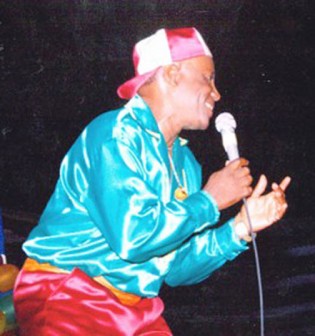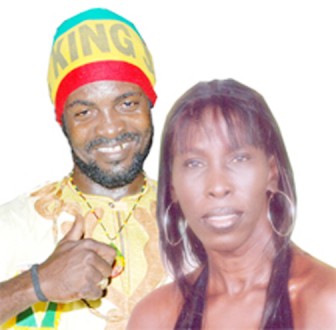It might surprise many to hear it said that after 41 years Guyana’s premier national festival is still a developing tradition. Yet, there are many reasons why that is true in the case of Mashramani, which was founded in 1970 and adopted as the national celebration of not only Republicanism, but nationhood. There is a great deal that needs to be said about it and much has not been properly documented, but there is no attempt to deal with those here. This is simply to point to some aspects of the state of the festival on a journey of development.


Mashramani is younger than all of them, and while it drew from, and formed itself around a number of traditions that existed in the 1960s, it does not have long and deep historical roots in any of them, except that, like most Caribbean traditional festivals, it is carnivalesque. It is an adaptation of an Independence celebration started by the Jaycees of Greater Mackenzie, and substantially remodelled on February 23, 1970 to celebrate Republican status. They called it ‘Mashramani,’ directly influenced by the Amerindian practice of mashirimehi. (cf JP Bennett, UG’s Amerindian Research Unit and SRR Allsopp). The name alone is an extremely interesting study, since contrary to popular opinion, ‘mashramani’ is a coinage (or corruption) and has not been found in any Amerindian source. As another aside, two of the founders who have provided invaluable historical information, Jimmy Hamilton and Walter Melville, deserve high national honours for their contribution.
To focus on elements of Mashramani’s state of development 41 years on, some of the relevant areas may be found in the music. In 1970 it was driven by steel band and calypso, while an attempt to feature shanto did not survive. Since then, however, with the very strong influence of the popular culture, three forms have developed in Mashramani, viz, the calypso, chutney and soca.

These annual competitions have emerged as important in the festival, although with some degree of arrested development. The Calypso Competition is a signal event in all Caribbean carnivals, and this has also been the case in Guyana’s Mashramani. It has remained fairly constant, coming out of a rather checkered history, but is still to develop as a cultural tradition, the way it is in Trinidad and Barbados. One difficulty in Guyana is that calypso is fairly seasonal, dusting off its cobwebs almost only in November each year in preparation for the next Mashramani in February, after which it retreats once more into hibernation. The national festival has not managed to push it into perennial national consciousness and a major industry. In fact, as an industry in Guyana it has actually declined since the 1960s.
The Department of Culture has promoted and supported it to a considerable degree with a well organized contest in 2011, attended by a large crowd, which suggested its continued popularity. The quality of the compositions, however, has fluctuated, remains relatively low and has not responded to sporadic attempts to address improvement. It is not easy to hold a workshop to make a dent in the quality of an art form that is so steeped in tradition. But it has taken little flight in contemporary Guyana. Calypso is an art form, but the 2011 King won the crown with a composition driven entirely by its popularity. It appealed to the crowd with its bold and ‘in-your-face’ challenges to the government, but it used no art. It was merely an outspoken statement of criticism, not a crafted composition using the art of calypso.
Significantly, there is a bright light shining out of another sector of the Mashramani Calypso Competition. The Junior Calypso contest in 2010 and 2011 produced signs of excellence, interestingly dominated by girls. The winners in both years were of high quality, and in fact, the 2011 Junior winner demonstrated all-round excellence and was the best in the Senior National Competition as well. It was also an inspired move to include the Junior Monarch in the senior contest, and it certainly proved a success.
The Mashramani Chutney Competition was another inspired addition to the festival. It broadened the reach of the celebration to include a musical form that used to be a tradition limited to its immediate constituency in Indian villages, formerly communities of indentured Indians and their descendants. That limitation ceased decades ago and chutney became a national form with increasing popularisation across ethnic boundaries within the population. Including it in the festival recognises this and has the opportunity to further promote and institutionlise the music.
However, this development is arrested by the way the competition is administered. The competition tends to be located almost exclusively at rural venues, which runs the risk of confining it to its ethnic constituencies rather than bringing it out nationally. In addition to that it is often time-tabled to clash with the Calypso finals, suggesting that the crowd has to choose between them, or that they have different audiences who will only be interested in one of the two, not both. At any rate it does not promote or encourage the crowd to attend both.
The demands and influence of the popular culture has driven Trinidad, Barbados and other territories to establish a separate competition for soca. Guyana now has a separate contest for soca, but it is a sponsored event by the private sector and not truly official. This is an important omission, particularly given the prominence of soca as a popular form and virtually the main music of Mashramani festivities. Mashramani must fully adopt this as an official contest.
Then, the three potentially large National Monarchies must be differently organised. There must be an attempt to give each substantial prominence. While the preliminary eliminations (or ‘auditions’) may be held at different regional venues away from Georgetown, the finals of each must be held at a prime/prestige venue in the capital city. This is to maximise the potential crowd and interest and reduce constituency limitations, while giving the visible indication that it is ‘national.’
Having established these in a grand way, they need to be routinely time-tabled so that they are held separately and do not clash with each other. Then stage-manage and present them in a way that can be called truly ‘grand’ to increase the attractiveness and seeming importance of each Monarchy.
A most difficult reality that will not be easily addressed is the fact that none of these musical forms in Guyana is strong enough to provide not just music, but the music for the festival. This is carried predominantly by imported music, largely Trinidadian soca. Mashramani must be looking to a time when it is led by Guyanese music, but that depends on several factors not easily stage-managed or prescribed.




